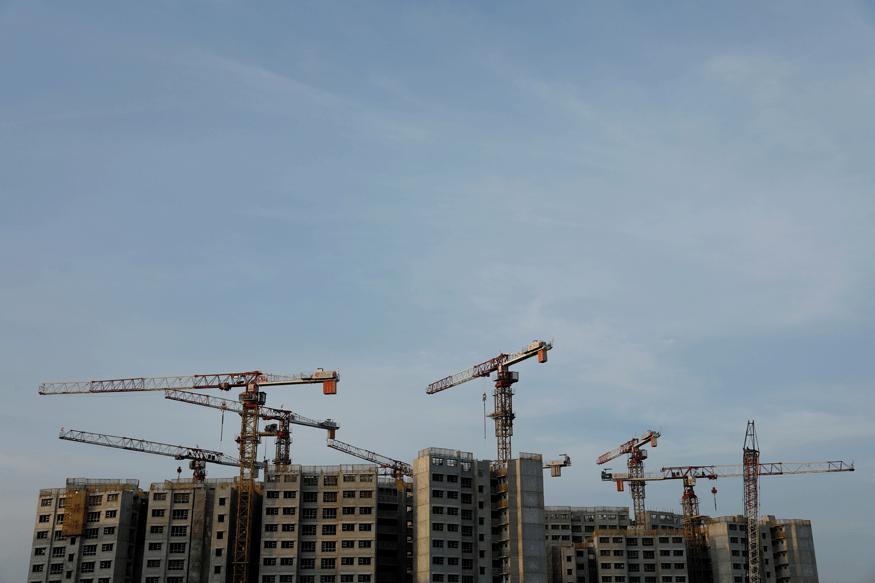In a Facebook Live discussion with Mint, Smantak Das discussed the sentiment of stakeholders—homebuyers, investors and developers—in the residential real estate market. Edited excerpts:
How do you observe the current residential real estate market? Where is it heading?
I think the real estate sector in India has gone through the most important reforms in the last 6 months to 1 year and these reforms are phenomenal in my opinion. These reforms are going to give medium- to long-term benefit to the sector. If you go by sentiments on the supply side—the financial institutions and developers—definitely they are more into aligning themselves in the new era of real estate. Customers are still in the wait-and-watch mode and they are definitely watching more from the angle of confidence and the angle of transparency. That’s exactly what the customers are looking forward to because of these reforms. But for the developers, this is recalibration of the business model because it’s a new era for them. In my opinion, this is a new paradigm for the real estate sector. So sentiments are slightly confused. Definitely both the consumers and developers have a very positive medium- to long-term outlook. But currently, it is slightly in a state of confusion.
What do you mean by a positive outlook in medium- and long-term?
For the developers, the positive outlook will be to increase the sales volume because, as you know—for example in National Capital Region (NCR) and Mumbai Metropolitan Region (MMR)—the sales volume have come down drastically, by 50% to 70% from the last peaks of 2010 and 2011.
I’m sure that they are not looking at any price escalation. Of course, there will be some normal price escalation that is definitely warranted. But they are not looking for a sudden jump in price as it used to happen 3 or 4 years back.
From the customers’ side, there are more of confidence issues because they have to get the product that they invested for. They have to get the product on time and should get all the amenities that were promised. I think, that is the major problem from the demand side, i.e., the consumer side. From the consumer side, the expectation is that the residential sector should be much more transparent, they should have good recourse to any failures of commitment.
Though home loan rates have come down about 2% in the last couple of years and property rates are either stable or have came down a bit; demand from homebuyers is not increasing? Why is it so?
That is exactly the scenario today. If you talk of the macroeconomic scenario, it is more or less stable and good. That’s what we have analysed.
If you talk of real estate prices, either in some locations there is a decline in prices or mostly there is stagnation. That means, time correction has taken place if you look at inflation-adjusted prices. Then, interest rate has touched 8.3% to 8.4%, which is like 2009-10 levels, when we had 8% or 8.25% on home loans.
So what is it that is deterring, or not allowing, customers to come off the waiting bench and sign the dotted lines? I think the confidence in developer, to deliver the product that they want is not there. Reforms have taken place in the residential sector in India and we will very soon get back the confidence of the buyers.
Do you think there is a mismatch between demand and supply in real estate?
I don’t think there is much of mismatch now. Back in 2008, just after the financial crisis, affordable housing was just a name. There was no real steam in it. Now we are getting full support of the government—and the government has a focus on affordable housing. For instance, giving it the infrastructure status and the Pradhan Mantri Awas Yojana.
So, there is not much mismatch now because even in cities like Mumbai we are seeing some good launches of relatively affordable houses. Of course, in other places also there will be a lot of initiatives in this type of affordable housing, which is good because previously there was a major mismatch (between what the sellers offered and the buyers wanted). Now that gap is slowly reducing because of this affordable housing initiative by the government and the focus from developers.
Yes, the mismatch is still there probably in the confidence, in the timeline of completion; that we have to still wait and watch because RERA (Real Estate (Regulation and Development) Act, 2016) is in place in most of the states and probably that will bring a match. So two things: price mismatch (which in my opinion is now coming to a convergence) and the mismatch towards the confidence (the time of delivery) should get mitigated in the medium to long term.
As per reports, to make houses more affordable in cities like Mumbai, developers are reducing the size of flats. Is this the right approach?
The approach is very simple. Given that the per square feet prices are difficult to reduce—15-25% reduction is sometimes very difficult because you have to understand that the developers are also many a times price takers. They too face the price impact of input factor like labour, steel and cement; which are definitely not coming down. Plus the land prices. Taking into account all these factors, I think the developers have started—in certain parts of Bangalore and Mumbai —reducing the size of flats. But trust me, I’ve seen that they are not pigeon holes. These are very compact houses. Good for a small family and in my opinion, as far as our survey goes, there is good reaction to these types of launches.
So we have to still wait and watch to see how the demand side is reacting to these compact houses. My opinion is that it is not as bad as we had thought it would be, because even in places like Bangalore—where you generally have bigger houses, projects with slightly smaller houses are selling because the ticket sizes are affordable. In Mumbai too, projects with smaller house sizes are not doing too bad.
Is there a possibility of further correction in prices or is it going to stay stable for some time?
We have analysed most of the cities and we have seen that for the last 3 years, if you see the consumer price index (CPI)—that is the retail inflation growth—I think in most of the cities your house prices has increased less than that, even in a city like Mumbai. So I would not say that there would be a price correction as such, because time correction has already happened and prices have been stagnant for the last 3 to 4 years.
So what I would say is that the type of upsides that we used to see in real estate investment, like price doubling in 3 or 4 years, those things are all history now. Because you have to understand that the real estate as an investment avenue will compete with other investment avenues.
So I don’t think I will see in the next 5 to 10 years that prices are doubling in 3 or 4 years, which was a very normal norm in real estate—at least that’s what we saw in 2008-09, and even in 2011.
We saw a lot of price appreciation, but then again it has stagnated. So that scenario is gone, that’s history now. The upside in price of real estate will be very normal upside, which has to now compete with other investment options.
with thanks : MINT :
LINK















